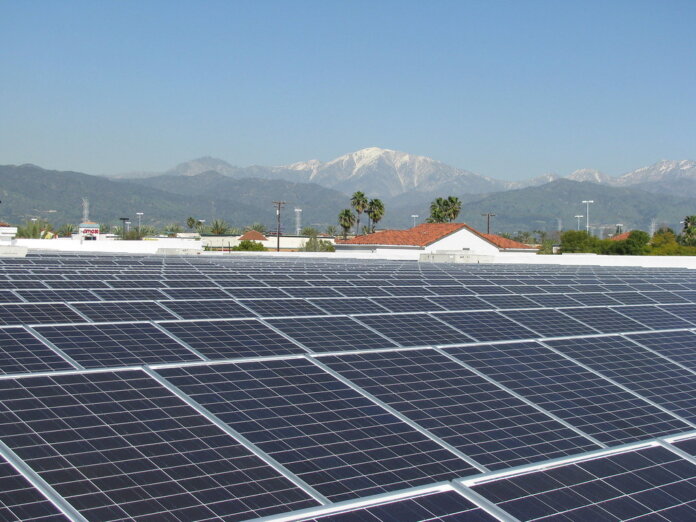Pacific Gas and Electric Co. (PG&E), San Diego Gas & Electric Co. (SDG&E) and Southern California Edison (SCE) have written a proposal to modernize California’s 25-year-old rooftop solar program to support customer equity and help continue California’s progress toward a clean energy future.
Recently submitted to the California Public Utilities Commission (CPUC), the joint proposal lays out a new approach for compensating future rooftop solar customers who export excess solar energy to the electric grid. This proposal would only apply to future, new rooftop solar customers, not current solar customers.
The heart of this modernization effort addresses an unfair and growing inequity stemming from earlier versions of the rooftop solar net energy metering (NEM) program. This cost shift leads to electricity customers without solar systems paying about $3 billion more annually in their electricity bills to subsidize existing rooftop solar customers. This represents each customer without solar paying as much as $240 extra every year – more for some customers with higher energy needs. The subsidy represents the costs of the electric grid that solar customers use, but for which they do not pay. Oftentimes, those left paying these higher costs are lower-income customers.
This proposal to modernize the 25-year-old NEM program would accomplish the following objectives:
- Ensure solar and non-solar customers using the grid pay their fair share for its costs
- Minimize any new, unnecessary bill increases for customers without solar, many of whom are lower-income
- Help California achieve its climate change and clean energy goals in a more cost-effective and equitable manner
- Update the current, outdated structure to align with today’s lower cost of solar energy and changing grid needs
The NEM program was established in 1995 to incentivize Californians to install rooftop solar panels to help jumpstart the solar industry, drive down costs and facilitate the transition to a clean energy future – and it worked. A customer’s rooftop solar equipment is connected to the electric grid. Solar customers use energy produced by their solar panels during the day when solar power is available and from the utilities at night or whenever their solar system is not generating enough power. Even when their solar panels produce energy, customers rely on the electric grid for power and for exporting their excess solar generation to the grid. Customers with both rooftop solar and battery storage systems are also connected to and rely upon the grid.
Rooftop solar customers receive a credit on their electric bills when their system generates more power than they need and that power is sent to the electric grid. The original goal of the credit was to help customers pay off their system over a reasonable period. Since the NEM program was established, solar costs have fallen dramatically. Customers are able to pay for their system in less than five years but continue to receive this subsidy for 20 years. The result of this high credit is that rooftop solar customers do not pay their full share for use of the grid that they rely on or for state-mandated, public policy programs that support energy efficiency or lower-income customers.
“Solar on Covina Walmart” by Walmart is licensed under CC BY 2.0





This article is actually just a lightly rewritten press release from California’s investor-owned utilities: Here’s the press release from PG&E. Here’s the one from SoCal Edison. And here’s the one from San Diego Gas & Electric.
To shame…
When I see factual news on Levelized cost of energy in that the cost of solar keeps dropping will I believe the investor owned utility is giving true value to the consumer.
When I can invest in my real estate value, my home and my family I will do so.
Community solar and solar on the roof is the true value to the consumer.
Screw the passive income Wall street utility investor. Don’t you understand consumer choice and capitalism for the average American?
This is pure utility propaganda. It is well known that rooftop solar subsidizes the utility by providing excess power to non-solar customers, thus allowing the utility to avoid purchasing costly energy. And, the distributed generation that rooftop solar provides lowers the stress on the grid and costly losses by providing power closer to where it is consumed. DO NOT BELIEVE THIS HIT PIECE against rooftop solar. It is untrue and continues to promote the lie that solar is unfair to non-solar customers. I wonder what Matthew Mercure’s relationship is with the investor owned utilities? That might be an important factor… Read more »
This is NOT journalism. This is propaganda, written by the [very fine] Public Relations firm that is presently in the employ of the utilities. Shame on you!
Who came up with the $3B number? If that includes utilities’ expense to upgrade their transmission infrastructure to modern standards, I call serious fowl on this entire article. Without these early — and huge investments by early homeowners — the prices of clean energy would not be as affordable as they are today. Update the policy but do so based on independent facts that don’t include utilities costs to do business
utility bs solar customers provide way more benefit to grid and other customers then nem pays them
Where is the “Sponsored by PG&E, SCE, and SDG&E” disclaimer on this “article”?